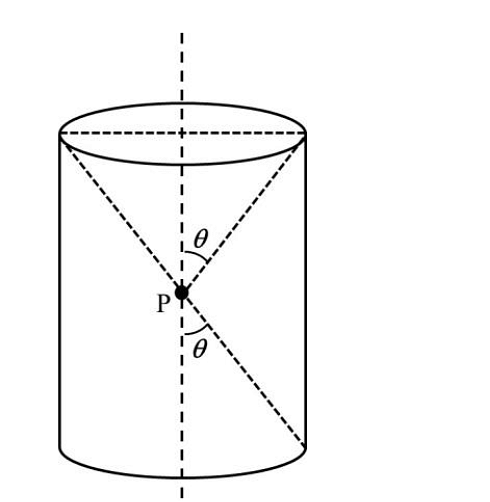What is the net flux of the uniform electric field of Exercise 1.15 through a cube of side 20 cm oriented so that its faces are parallel to the coordinate planes?
Solution and Explanation
All the faces of a cube are parallel to the coordinate axes. Therefore, the number of field lines entering the cube is equal to the number of field lines piercing out of the cube. As a result, net flux through the cube is zero.
Top Questions on Electric Flux
- An electric field \( \vec{E} \) is given by:
\[ \vec{E} = \begin{cases} +100\, \hat{i} \dfrac{\text{N}}{\text{C}} & \text{for } x>0 \\ -100\, \hat{i} \dfrac{\text{N}}{\text{C}} & \text{for } x<0 \end{cases} \] A right circular cylinder of length \( 10\, \text{cm} \) and radius \( 2\, \text{cm} \), is placed such that its axis coincides with the x-axis and its two faces are at \( x = -5\, \text{cm} \) and \( x = 5\, \text{cm} \). Calculate: (a) the net outward flux through the cylinder, and (b) the net charge inside the cylinder.- CBSE CLASS XII - 2025
- Physics
- Electric Flux
A line charge of length \( \frac{a}{2} \) is kept at the center of an edge BC of a cube ABCDEFGH having edge length \( a \). If the density of the line is \( \lambda C \) per unit length, then the total electric flux through all the faces of the cube will be : (Take \( \varepsilon_0 \) as the free space permittivity)

- JEE Main - 2025
- Physics
- Electric Flux
A metallic sphere of radius \( R \) carrying a charge \( q \) is kept at a certain distance from another metallic sphere of radius \( R_4 \) carrying a charge \( Q \). What is the electric flux at any point inside the metallic sphere of radius \( R \) due to the sphere of radius \( R_4 \)?

- KCET - 2025
- Physics
- Electric Flux
- The angle between the particle velocity and wave velocity in a transverse wave is (except when the particle passes through the mean position)
- KCET - 2025
- Physics
- Electric Flux
- A charge is kept at the central point P of a cylindrical region. The two edges subtend a half-angle \(\theta\) at P, as shown in the figure. When \(\theta = 30\) , then the electric flux through the curved surface of the cylinder is \(Φ\). If \(\theta= 60\degree\) , then the electric flux through the curved surface becomes \(Φ/√𝑛\), where the value of n is______.

- JEE Advanced - 2024
- Physics
- Electric Flux
Questions Asked in CBSE CLASS XII exam
- Find the absolute maximum and absolute minimum of the function \( f(x) = 2x^3 - 15x^2 + 36x + 1 \) on \( [1, 5] \).
- CBSE CLASS XII - 2025
- Absolute maxima and Absolute minima
- An electric dipole consists of charges \(\pm 4 \mu C\) separated by a distance of \(6\,cm\). Calculate the electric field at a point on the axial line at a distance \(20\,cm\) from its center.
- If \( x = a \left( \cos \theta + \log \tan \frac{\theta}{2} \right) \) and \( y = \sin \theta \), then find \( \frac{d^2y}{dx^2} \) at \( \theta = \frac{\pi}{4} \).
- CBSE CLASS XII - 2025
- Derivatives
- Find the intervals in which the function $f(x) = 5x^3 - 3x^2$ is (i) increasing (ii) decreasing.
- CBSE CLASS XII - 2025
- Derivatives
- Find : \[ I = \int \frac{x + \sin x}{1 + \cos x} \, dx \]
- CBSE CLASS XII - 2025
- Integration